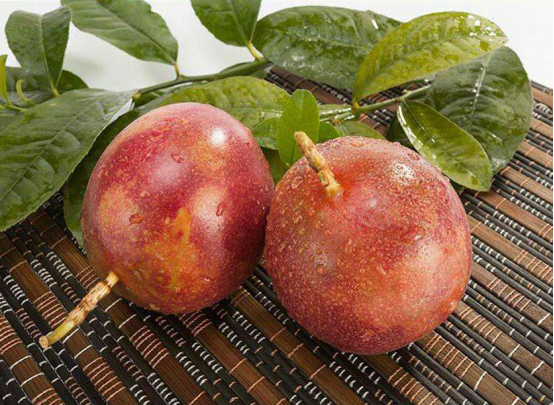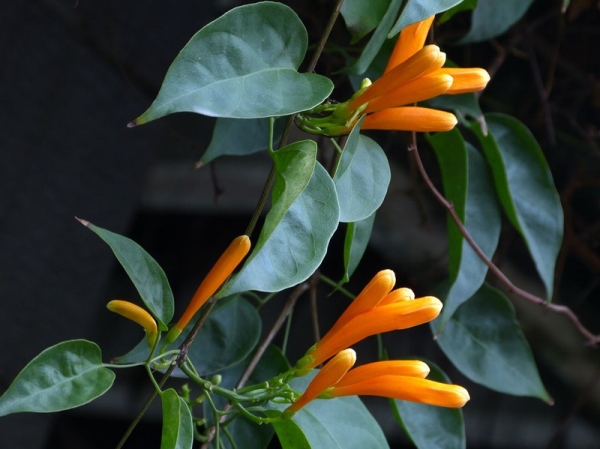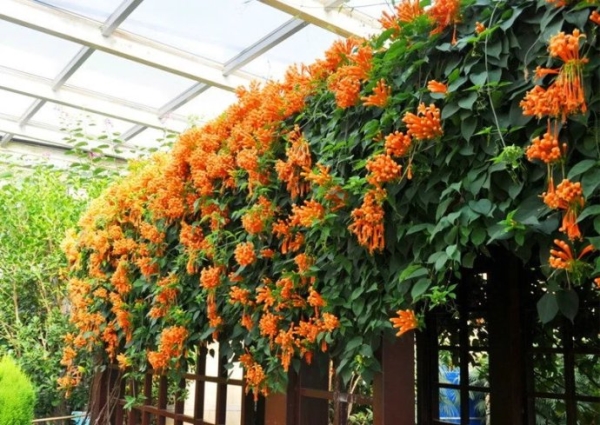Passionflower culture
Soil
Passionflower is not strict with the soil and has strong adaptability. It can be planted in front and behind the house, even by the roadside, but it can grow well in the soil rich in organic matter, loose, deep soil and good drainage.
Light
Passionflower is a tropical and subtropical plant, so it is best to plant it in a sunny place. If bonsai is cultivated at home, remember to place it on the windowsill facing south.

Moisture content
Passionflower has strict requirements for water, afraid of both stagnant water and drought. When blooming and fruiting, the lack of water will lead to small fruit, decline in quality and fruit drop, so it is necessary to increase or reduce the amount of water according to the situation.
Fertilizer application
When first planting, it should be remembered that the application of base fertilizer should be combined with hole-opening planting, and the application of rotten farm manure in each hole should not exceed 15 kg at least. After fruit harvest every year, pruning and weeding should be combined with sufficient base fertilizer, and each plant should apply sufficient amount of rotten organic fertilizer.
Matters needing attention in passionflower culture moderate watering
When passionflower is found to be dry, it should be watered in time, and in rainy season, attention should be paid to timely drainage to avoid the rotting roots caused by Rain Water's accumulation. Daily only need to ensure that the soil does not whiten. When passionflower blossoms and sets fruits, make sure that the soil water content is at its maximum, but be careful not to waterlogging.
Topdressing in time
Passionflower topdressing is generally carried out after colonization and survival, once a month, first light and then concentrated, with the application of thin dung water is better. After planting passionflower, according to the weather according to the growth status of the seedlings timely irrigation and drainage, and combined with clear light fertilizer for two to three times. Note that passionflower is sensitive to nitrogen fertilizer. Applying too many flowers before flowering can easily lead to excessive growth but no fruit, so you can apply more phosphate and potash fertilizer.
The above is the introduction of passionflower culture methods and points for attention to remind you, do you want to raise a pot of passionflower useful?
Introduction to planting techniques and culture methods of passionflower
Passionflower is also known as egg fruit, Brazil fruit, rattan peach, passion fruit, passion fruit, etc., it belongs to a perennial evergreen climbing woody vine, the fruit taste is very fragrant and delicious, with the reputation of the king of fruit juice. The stem of passionflower is cylindrical and slightly angular, without any whiskers, the leaves are papery, the base is heart-shaped, and the palm is 5-parted, and the middle lobe is ovate-oblong. Its flowers are very large, the color is light green, the berry is oval shape, and is nearly spherical shape, the color is orange or yellow, there are many seeds, is inverted heart-shaped, florescence is usually in May-July. Let's take a look at the passionflower planting techniques and culture methods. Passionflower fruit contains more than 135 aromatic substances in it, suitable for processing into fruit juice, can also be mixed with other different kinds of fruit to make mixed fruit juice, so as to improve the taste and flavor of fruit juice, can also be made into different ice cream or other foods as additives, so as to increase the aroma of food and improve quality. Passionflower, native to Brazil, was slowly introduced in South Africa, Southeast Asian countries, Australia, the South Pacific and other regions. Passionflower is a fruit of tropical and subtropical regions. It likes to grow in sunny, sunny and warm climates. Passionflower has a very strong ability to adapt to the environment, it does not have particularly high requirements for soil, and it can be planted in front and behind houses, roadsides and mountains. It likes to grow in soil with loose and fertile soil, deep soil, good drainage, sufficient sunshine and rich organic matter. It avoids stagnant water, and its drought tolerance is not particularly good. It needs to keep the soil moist for a long time. [passionflower planting technology] there are many propagation methods of passionflower, such as sowing propagation, striping propagation and cutting propagation, but the germination rate of fruit seed propagation is very high, and seed propagation is also a common propagation method. 1. Seed reproduction: seed reproduction can be carried out all the year round, and sowing in spring and autumn is the best time. Generally speaking, the mother plant with no disease and insect harm and high yield is used. it is best to use the thick and mature seed, clean the residue above and then sow the seed. Disinfect the seeds with carbendazim, then sprinkle the seeds on the seedbed, cover them with a thin layer of grass and shade them, and then pour in enough water. In the sweet time, you can spray water on it once in the morning and evening, and then it can be unearthed half a month later. When the seedlings grow, you can gain weight, then irrigate with thin fertilizer and your even liquid fertilizer, and wait until the seedlings grow to about 4 true leaves for transplanting. two。 Striping reproduction: striping reproduction is a method of asexual reproduction, which is generally the best in February-March in spring. Press the branches above the mother bamboo into the soil, then wrap them in the soil, then form adventitious roots, separate the upper branches from the mother plant, and then form independent plants to propagate. The use of ring peeling method, so that the plant growth is faster, and the seedling time is also relatively short. 3. Cutting propagation: cutting propagation is also carried out in February-March, and autumn propagation can be used. Choose healthy and mature one-year-old vines as the cutting material, the length is 10-15cm. After the cuttings are trimmed, you can use rooting powder to soak for half an hour, and then put them into the picture and humus for cutting and watering thoroughly to keep the soil moist according to the weather. [introduction of passionflower culture method] 1. Soil: culture passionflower needs to choose loose and fertile, loose texture, good permeability of sandy soil, or tight sandy soil, mid-year, cold sandy soil is easy to be scoured, not suitable for planting or after improvement is OK, soil using pH ph7.0 neutral or slightly acidic soil is the most suitable. two。 Watering: watering and drainage measures should be done when breeding passionflower, which can be irrigated by adding light fertilizer or foliar fertilizer. When the seedlings grow to 40-50cm, the pillars should be provided in time, and then the vines of the young trees should be pulled on the shelves. When the young trees grow to 70-80cm, they can leave the side vine branches, and then distinguish the traction on the shelves. 3. Fertilization: passionflower is a relatively large vine fruit tree, it needs a lot of nutrients, when planting, you should apply enough base fertilizer in it, and then plant passionflower seedlings. Passionflower base fertilizer can be applied farm fertilizer, Tong cruller fertilizer, need regular topdressing, in topdressing should add more than general compound fertilizer, after flowering, can apply too much nitrogen fertilizer. 4. Pruning: if you want a beautiful passionflower plant, you need to prune it regularly. The main branch of passionflower grows relatively fast, and it needs to be controlled manually after planting. When its bamboo branch grows to about one meter, it needs to be coring, and then it needs to reach the growth of lateral vines. When it is found that more than one meter is found, it is still necessary to carry out coring treatment. Passionflower for secondary branching, so as to achieve the effect of controlling growth. 5. Prevention of diseases and insect pests: when passionflower is growing, some diseases are often encountered, such as stem rot, Lignification virus, and so on, while the pests encountered are red spiders and fruit flies, which can be potted with malathion or sprayed with related drugs. for effective control.
More information on how to cultivate Dendrobium candidum with rich bamboo planting method camphor tree planting king flower picture of Japanese cherry blossom
- Prev

Propagation method of firecracker flower
The most common method of cutting propagation is cutting propagation. The cuttage propagation of firecracker flowers is generally chosen in spring, because the survival rate of propagation is higher during this period. First of all, we should choose the right cuttings, cut the mature stems of firecrackers, and choose sturdy branches free from diseases and insect pests.
- Next

Culture method of fireworks flower
Soil Because the requirements of fireworks on the soil are not high, so we need to plant fireworks in a soil rich in organic matter and good drainage, the soil layer should be deep. Generally, you can use a mixture of moldy leaf soil and garden soil and sand, and put some decomposed fertilizer or bean cake as base fertilizer.
Related
- Fuxing push coffee new agricultural production and marketing class: lack of small-scale processing plants
- Jujube rice field leisure farm deep ploughing Yilan for five years to create a space for organic food and play
- Nongyu Farm-A trial of organic papaya for brave women with advanced technology
- Four points for attention in the prevention and control of diseases and insect pests of edible fungi
- How to add nutrient solution to Edible Fungi
- Is there any good way to control edible fungus mites?
- Open Inoculation Technology of Edible Fungi
- Is there any clever way to use fertilizer for edible fungus in winter?
- What agents are used to kill the pathogens of edible fungi in the mushroom shed?
- Rapid drying of Edible Fungi

